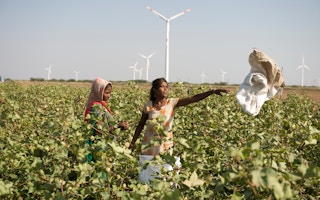As scientists and activists urge rapid cuts in the use of climate-heating coal for power production around the world, new projections from India show that coal will remain its biggest source of electricity this decade, despite a fast rise in the nation’s renewable energy capacity.
Globally, US$1.7 trillion - 60 per cent of total energy investment - is expected to go into clean technologies, including renewable energy, in 2023, outpacing fossil fuel finance, the International Energy Agency (IEA) said on Thursday.
Countries like India need fast deployment of renewables to meet their green power goals. But the IEA said that growth could be held back by low levels of investment in emerging economies due to factors such as higher interest rates, unclear policy frameworks, weak power grids and financially stressed utilities.
In India, by 2030 coal will still generate the highest share of its electricity at 55 per cent, down from 73 per cent today, while renewables, led by solar, will account for 31 per cent, up from 12 per cent now, the country’s Central Electricity Authority (CEA) said this month.
A flagship climate science report from the UN’s Intergovernmental Panel on Climate Change (IPCC) in March called for urgent cuts in greenhouse gas emissions this decade to limit the rise in global average temperatures to 1.5 degrees Celsius above pre-industrial times.
Those emissions cuts should include an 80 per cent drop in the use of coal - the most climate-polluting fossil fuel - between 2020 and 2030, according to modelling by scientists who worked on the IPCC report.
That would require large emerging economies including China, India and South Africa - which still depend heavily on coal for their electricity - to phase down their coal use substantially in the coming years, experts said.
However, those countries have repeatedly said that coal is important for their energy security - and India has resisted efforts by some governments at UN climate negotiations to secure a commitment to phase out coal power.
Here we examine what India’s continued reliance on coal means for its carbon emissions and global energy politics.
Why does India need more coal along with ambitious renewables targets?
India has one of the world’s most ambitious renewable energy targets, to install 500 gigawatts (GW) of capacity by 2030 and meet half of its installed electricity capacity from non-fossil fuel sources, including nuclear and hydro.
Installed capacity is the maximum power a plant can produce, while generation measures the amount of electricity produced in one hour.
The CEA’s new projections show that India will triple its installed renewables capacity, beating its target - a positive sign, experts said, as discussions to set a global target for renewables gather pace.
The United Arab Emirates, which is hosting this year’s UN climate summit, wants countries to commit to triple renewables capacity globally by 2030.
In India, meanwhile, coal power capacity is set to increase by a smaller 19 per cent, shrinking its share to 32 per cent of the total by 2030, down from about half now.
Nonetheless, actual electricity generation from coal is set to remain the highest source of power by the end of the decade, the CEA numbers show.
This is because India’s renewables targets, while ambitious, will still not be enough to meet rising power demand, said Rahul Tongia, a senior fellow at the Delhi-based Centre for Social and Economic Progress.
India’s per-capita electricity consumption will increase rapidly as the 900 million people who gained access to electricity in recent years buy more appliances.
Demand will also increase along with growth in electric vehicles, infrastructure and cooling needs amid rising heat fuelled by climate change.
Another concern is that renewables do not offer a reliable source of power generation, as they depend on variable natural resources, from sunlight to wind and water.
To help smooth supply, India needs more than 60 GW of battery storage to fully utilise the potential of its 2030 renewables goal, according to the CEA.
Yet grid-scale battery storage is costly, Tongia noted, with supply chain disruptions linked to the Covid-19 pandemic and the Russia-Ukraine war pushing up prices.
India is counting on hydro to balance its grid with the intermittent nature of renewables. Yet while hydropower capacity is growing, it has run up against problems, including being blamed for damage to Himalayan towns and infrastructure from construction of dams and run-of-river projects.
India also has plans to add nuclear power but nuclear has not accelerated as fast as other forms of non-fossil-fuel energy, Tongia said, while India has also struggled to secure gas supplies.
“Now what is India left with? Coal remains the backstop,” he added.










